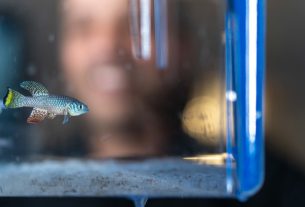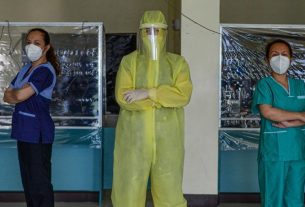Frankenstein’s creature is coming back to life – again. As Guillermo del Toro’s new adaptation of Mary Shelley’s gothic masterpiece airs on Netflix, we provide an anatomist’s perspective of her tale of reanimation. Could an assembled body ever breathe, bleed or think?
When Shelley wrote Frankenstein in 1818, anatomy was a science on the edge of revelation and respectability. Public dissection theatres drew crowds, body snatchers supplied medical schools with illicit corpses and electricity promised new insights into the spark of life.
Shelley’s novel captured this moment perfectly. Victor Frankenstein’s creation was inspired by real debates: Luigi Galvani’s experiments on frog legs twitching under electric charge, and Giovanni Aldini’s demonstrations making executed criminals grimace with applied current. To early 19th-century audiences, life might indeed have seemed a matter of anatomy plus electricity.
The first problem for any modern Frankenstein is practical: how to build a body. In Shelley’s novel, Victor “collected bones from charnel houses” and “disturbed, with profane fingers, the tremendous secrets of the human frame”, selecting fragments of cadavers “with care” for their proportion and strength.
From an anatomical perspective, this is where the experiment fails before it begins. Once removed from the body, tissues rapidly deteriorate: muscle fibres lose tone, vessels collapse and cells deprived of oxygen enter necrosis within minutes. Even refrigeration cannot preserve viability for transplantation beyond a few hours.
To reattach limbs or organs would demand surgical anastomosis – precise reconnection of arteries, veins and nerves using microsutures finer than a human hair. The notion that one could sew together entire bodies with “instruments of life” and restore circulation across so many junctions defies both physiology and surgical practice.
Shelley’s description of construction is vague; we estimate that the limbs alone would require over 200 surgical connections. Each piece of tissue would have to be matched to avoid immune rejection, and everything would need to be kept sterile and supplied with blood to stop the tissue from dying.
The electrical illusion
Let’s assume the parts settle into place. Could electricity reanimate the body? Galvani’s twitching frogs misled many into believing so. Electricity stimulates nerve membranes, triggering existing cells to fire – a fleeting simulation of life, not its restoration.
Defibrillators work on this principle: a well-timed shock can reset a fibrillating heart because the organ is already alive, its tissues still capable of conducting signals. Once cells die, their membranes break down and the body’s internal chemistry collapses. No current, however strong, can restore that balance.
Penta Springs Limited/Shutterstock.com
The thinking problem
Even if a monster could be made to move, could it think? The brain is our most hungry organ, demanding constant oxygen-rich blood and glucose for energy. A living brain’s vital functions only work under tightly-controlled body temperature and depend on the circulation of fluids – not just blood but cerebrospinal fluid (CSF), too, pumped under appropriate pressure, delivering oxygen and carrying away wastes.
Brain tissue can stay alive for only six to eight hours once it is removed from the body. To keep it going for that long, it has to be cooled on ice or placed in a special oxygen-rich solution. During this time, the brain cells can still work for a while – they can send signals and release chemicals.
Cooling the brain is already used in medicine, for example, after a stroke or in premature babies, to protect the brain and reduce damage. So, in theory, cooling a donor brain before a transplant could help it survive longer.
If we can transplant faces, hearts and kidneys, why not brains? In theory, a rapidly transplanted brain could have its vessels connected to a new body. But the severed spinal cord would leave the body paralysed, without sensation, requiring artificial ventilation.
With circulation restored, pulsing CSF flow and an intact brainstem, arousal and wakefulness might be possible. But without sensory input, could such a being have complete consciousness? As the organ for every memory, thought and action we make, receiving a donor brain would be confusing, programmed with another mind’s personality and legacy of memories. Could new memories form? Yes, but only those born from a body severely limited by the absence of movement or sensation.
Controversial surgeon Sergio Canavero has argued human head transplants may enable “extreme rejuvenation”. But beyond the ethical alarms, this would require reconnecting all peripheral nerves, not just joining the spinal cord – a feat far beyond current capability.
Life support, not resurrection
Modern medicine can replace, repair or sustain many parts once considered vital. We can transplant organs, circulate blood through machines and ventilate lungs indefinitely. But these are acts of maintenance, not creation.
In intensive care units, the boundaries between life and death are defined not by the beating heart, but by brain activity. Once that ceases irreversibly, even the most elaborate support systems can only preserve the appearance of life.
Shelley subtitled her novel The Modern Prometheus for a reason. It is not just a story about science’s ambition, but about its responsibility. Frankenstein’s failure lies not in his anatomical ignorance but in his moral blindness: he creates life without understanding what makes it human.
Two centuries later, we still wrestle with similar questions. Advances in regenerative medicine, neural organoids and synthetic biology push at the boundaries of what life means, but they also remind us that vitality cannot be reduced to mechanism alone. Anatomy shows us how the body works; it cannot tell us why life matters.



